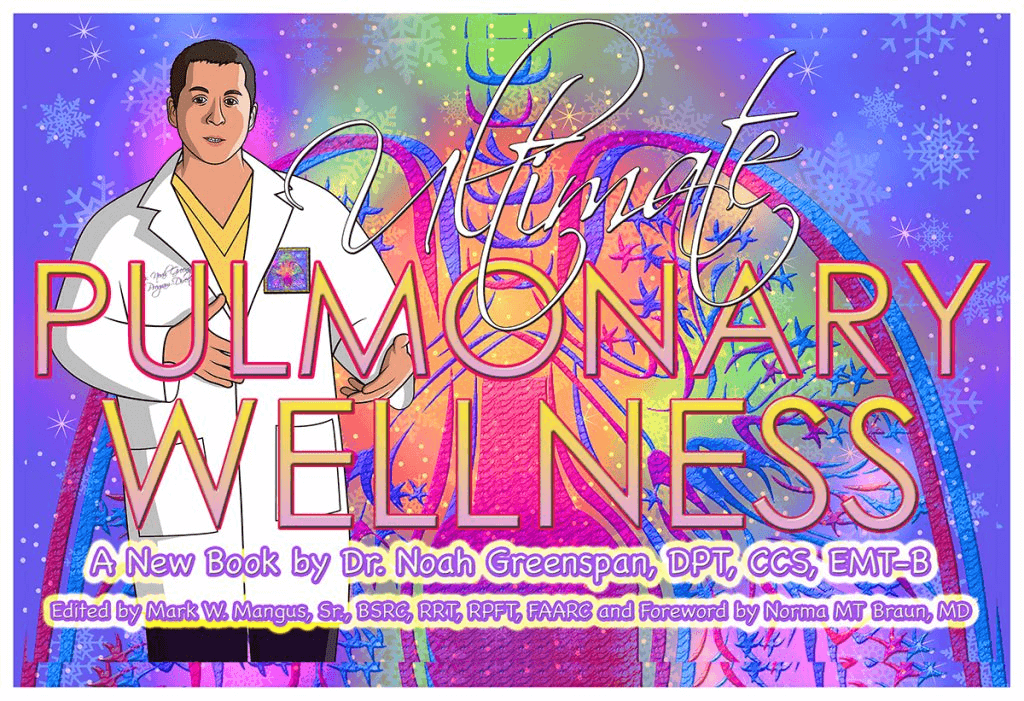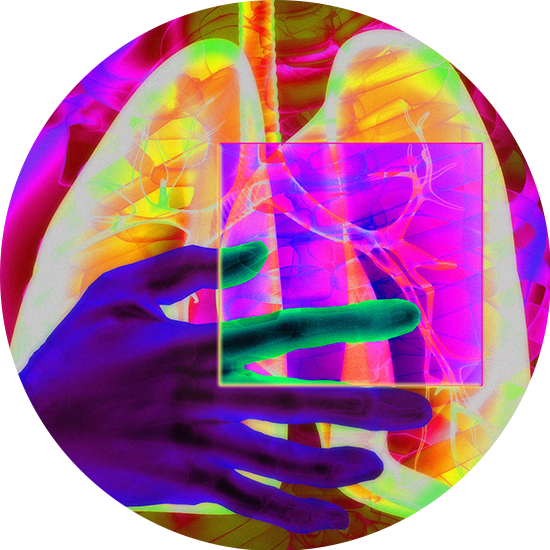
Shortness of Breath
Noah Greenspan, PT, DPT, CCS, EMT-B
Typically, when people first begin to experience shortness of breath or dyspnea on exertion (DOE), they either find ways to modify the activities that cause them discomfort, or they simply avoid them altogether. While this may seem like the safest and most reasonable course of action, lowering your activity level can worsen the situation, causing you to become weaker and shorter of breath over time, until even life’s simplest tasks, like showering or getting dressed, can become difficult thanks to that miserable SOB (shortness of breath).
Let’s use stair climbing as an example. In our small town of New York City, our subway steps are not built for comfort. Rather, they are designed for efficiency, which here in New York City means “space-saving.” As a result, they are usually longer, higher, and steeper than the stairs in most people’s homes or even those you might encounter in a restaurant or movie theater. Add to this scenario, a mob of type-A New Yorkers during rush hour, and the situation more closely resembles the running of the bulls than a daily commute. Patients frequently tell me that they don’t take the subway anymore because they can no longer climb the stairs. Instead, they take the bus or taxi, or Access-A-Ride, (but that’s a whole ‘nother story, altogether).
Again, using our stair-climbing example, think about how much less activity a person will get if they switch from taking the subway to taking the bus. Let’s say they usually commute to work five days per week and have two flights of stairs going to work and two flights coming back home. That’s 20 flights of stairs per week—80 flights per month—and nearly 1000 flights per year.
It isn’t hard to imagine that if you climb 1000 fewer flights of stairs this year than you did last year, your body will naturally (or more accurately, unnaturally), become less conditioned, and you will likely experience an increase in your shortness of breath. Incidentally, these negative adaptations to inactivity can happen even if you don’t have a pulmonary disease.
Now, here is a concept that is very important to understand. The inability to climb stairs can be affected by many factors including shortness of breath, cardiovascular disease, muscle weakness or fatigue. It can even be caused by anxiety, which, incidentally, is both increased by shortness of breath and increases shortness of breath (another vicious cycle we want to break). Or it can be cause by osteoarthritis or spinal stenosis or something else altogether.
But, as you become more deconditioned, one consequence is that your body does not use oxygen as efficiently. As a result, you then start to feel short of breath at lower levels of activity. Then, you start to avoid those (even lower level) activities, and so on and so forth. Again, this is called the dyspnea cycle or dyspnea spiral and our goal is to help you break that cycle by teaching you more effective breathing techniques—and teaching you how to exercise most effectively every time, so that your body becomes more efficient at using oxygen and you, more fit and less short of breath.
For many people, their symptoms can get so bad that the activity doesn’t seem possible or worth the effort anymore. Depending upon where you live and the resources available to you, this scenario can drastically limit the things you can do, the places you can go, and the people you can see. We will also discuss some of the challenges of portable oxygen use later in the book.
Some of my patients can map out the city by where there are steep (or in some cases, not so steep) inclines or hills. Others can map out the city based on where there are places to sit down and rest, and still others, by the availability of public restrooms. They take the easier routes whenever possible and avoid hills like the plague. But as you might have guessed, all the muscles that they use to walk uphill become deconditioned, and they now start to feel short of breath at even lower levels of activity (e.g., walking on flat surfaces). Sound familiar?
There is also another important possibility that you (and your doctor) should consider. Believe it or not, it is completely possible that your shortness of breath could be the result of something else altogether. Patients come to me all the time that can’t understand why they’re shorter of breath. “Nothing has changed,” they protest. That’s when I start my interrogation. I inquire knowingly as to whether there have been any changes in their medications, exercise regimen, weight, and etcetera, etcetera.
“Oh, yeah. I have gained (or lost) a little weight,” they say. To which I say: “How much? “About 25 pounds,” they say (or 30, or 40, or more). To which I say: “So, you’ve gained 25 (or lost 10) pounds and think nothing’s changed?”
Let me put this in perspective for you: 25 pounds is the equivalent of two bowling balls. Try carrying two bowling balls around with you all day, every day, for a while. I am pretty sure that you will get tired more easily, have more difficulty climbing stairs, and yes; feel shorter of breath. And when you lose 10 pounds without trying, there is a good chance that at least some, if not most of that is muscle.
We’ll discuss the subject of weight in greater detail in the nutrition chapter, but my point in introducing it now, is to illustrate that there are many factors besides the lungs and the respiratory system that contribute to breathing and consequently, SOB.
At Pulmonary Wellness, our goal is to help patients break this “dyspnea cycle” by teaching them more effective breathing techniques and exercising them most effectively, so that their bodies become more efficient at using oxygen. We also educate our patients about their disease, medications, the benefits of exercise, eating healthy, managing stress and anxiety, and the pitfalls of cigarette smoking and inactivity. I truly believe that in most cases, an educated patient will be a healthier (and happier) patient.
A well-known principle in medical ethics is “Primum Non Nocere.” This phrase comes from the Latin, meaning, “First, do no harm.” At our Center, patient safety is our first, second, and third priority. We believe in a “no-setback” approach to cardiopulmonary rehabilitation and when it comes to patient care, I don’t like surprises. That’s why everything we do at the Center is done under fully monitored conditions.
As our rehabilitation patients exercise, they are “telemetrically monitored”, which is a fancy way of saying that they wear an electrocardiogram (ECG), so that we can continuously monitor their heart rate and rhythm during exercise. Their blood pressure and oxygen saturation are each measured in 5-minute increments. Again, our patients’ safety is our first, second, and third priority.
The beauty of this type of monitoring system is that we can be confident in adjusting our patients’ programs, not just daily, but even within each individual workout, allowing us to ensure not only their safety, but also that they are receiving the maximum benefit from every session. This methodology is the real secret to our success, and of course, the karaoke.
Most recently, we have developed an at-home cardiopulmonary “bootcamp,” to allow you to stay in touch, get educated and get in your exercise even if you don’t have access to a formal, in-person rehabilitation program. Bootcamp aims to take all our experience of the past 30 years and bring it to you form the comfort of your home, or anywhere else in the world. We will discuss Bootcamp more in the exercise chapter.
Please feel free to share this information with your healthcare team and please be sure to get your doctor’s go-ahead before beginning any exercise program or implementing any lifestyle change. And who knows? He or she may even learn a thing or two that can help his, her, or their other patients.
Finally, your attitude is essential. I understand that when you feel sick, it can be difficult to focus on being shiny, happy, and positive. However, constantly focusing on your illness or all the things you can’t do can have a profoundly negative impact on your health and well-being. Throughout this book, we will be guiding you and sharing methods that will help you work your way back to wellness, so that your actions and thoughts can begin to have a profoundly positive impact on your health and well-being—in other words, your life. Don’t worry about the starting line. For now, think of yourself as the healthiest you can be today…and then get ready to become healthier.
Order Your Book Now!

Purchase Your Signed Copy Today!
- Within the United States: $27.50 including Postage and Handling!
- Outside of the US: $52.00 including Postage and Handling! (Sorry. We know that is more than the cost of the book but we cannot ship for less.)
Subscribe To Our Newsletter For Upcoming Offers
- Be the first to know about new webinars, exclusive offers, and podcasts.
























